
Soccer is a sports video game developed by Intelligent Systems and published by Nintendo for the Nintendo Entertainment System. It was released in Japan and North America in 1985, and in Europe in 1987. It was released for the Famicom Disk System in 1986. It was released on the Wii and Wii U Virtual Console on June 12, 2014. It was released on Nintendo Switch Online in 2018.

Double Dribble is an arcade basketball video game developed and released by Konami in 1986. It was the second basketball arcade video game by Konami, following Super Basketball. It was considered the most realistic basketball sports video game upon release, with fast-paced action, detailed players, a large side-scrolling court, innovative cinematic slam dunks, and detailed sound effects, beginning a trend where presentation would play an increasingly important role in sports games.

DJMax is an action-rhythm video game series created by Neowiz MUCA. Games feature mostly experimental music and visual art from Korean DJs, artists and composers. Known South Korean experimental group Clazziquai Project has also made songs for the series. There are also a few Japanese composers who have given significant contributions to the series.

Shadowrun is a first-person shooter video game, developed by FASA Studio for Xbox 360 and Windows Vista. The game features a buying system which is inspired by the game Counter-Strike. The game is also inspired by the role-playing game of the same name.
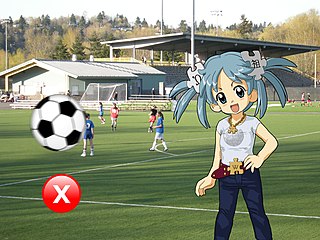
In video games, a quick time event (QTE) is a method of context-sensitive gameplay in which the player performs actions on the control device shortly after the appearance of an on-screen instruction/prompt. It allows for limited control of the game character during cut scenes or cinematic sequences in the game. Performing the wrong prompt, mistiming the action, or not performing any action at all results in the character's failure at their task, resulting in a death/failure animation and often an immediate game over or the loss of a life, with some games providing a lesser but significant penalty of sorts instead.

Racket Attack is a 1988 professional tennis Nintendo Entertainment System game. It was released in Japan as Moero!! Pro Tennis (燃えろ!!プロテニス), which the second game of the Moero!! sports series. The gameplay takes place in a ¼ overhead view tennis court with the score being present at all times and an audience of spectators being shown in multiple colors. The North American version features an endorsement from Wilson Sporting Goods. The game was released fairly late in the NES life cycle in Europe and the PAL regions, as available sources show, due to the lengthy process of distributing and the fact that Nintendo have still just started to get into the region by the time of the Japanese release of the game. This game is seen as an overall improvement over the original Tennis video game for the Nintendo Entertainment System with a wide selection of player characters and a deep level of gameplay for the late 1980s.
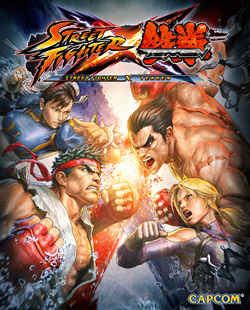
Street Fighter X Tekken is a crossover fighting game developed and published by Capcom and released in March 2012 for the PlayStation 3 and Xbox 360, in May for Windows and in October for the PlayStation Vita. The game features characters from both the Street Fighter franchise and Namco's Tekken series. In the game, each player selects two characters respectively and face other as duos in tag team fighting matches, with the objective to knock out one of the members from the opposing team. In addition to the game's multiplayer modes, the game also features a single-player Story mode with a plot revolving around a mysterious object called the "Pandora".

Virtua Tennis 4, known in Japan as Power Smash 4, is the third sequel to Sega's tennis game franchise, Virtua Tennis. It was released on PlayStation 3, Xbox 360, Microsoft Windows, Wii and PlayStation Vita. This is the first main series Virtua Tennis game to not have an arcade release before the console releases. An arcade version was also released, which is powered by the PC-based Sega RingEdge arcade system. There are two versions of the cabinet: an upright 4-player cabinet, and a deluxe 4-player cabinet.

LittleBigPlanet (LBP) is a puzzle platform video game series created and produced by British developer Media Molecule and published by Sony Interactive Entertainment. Most games in the series put a strong emphasis on user-generated content and are based on the series' tagline "Play, Create, Share". The tagline represents the three core elements of the series: playing alone or with others locally or online, creating new content using the in-game creation tools, and sharing creations and discoveries online with other players.
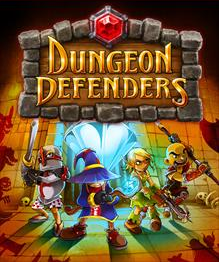
Dungeon Defenders is a hybrid multiplayer video game developed by Trendy Entertainment that combines the genres of tower defense and action role-playing game. It is based on a showcase of Unreal Engine 3 named Dungeon Defense. The game takes place in a fantasy setting where players control the young apprentices of wizards and warriors and defend against hordes of monsters. A sequel titled Dungeon Defenders II was released in 2015.

Super Stardust Delta is a twin-stick multidirectional shooter video game for the PlayStation Vita handheld console. It is part of the Stardust series of games developed by the Finnish company Housemarque.

Rayman Legends is a platform video game developed by Ubisoft Montpellier and published by Ubisoft. It is the fifth main title in the Rayman series and the direct sequel to the 2011 game Rayman Origins. The game was released for Microsoft Windows, PlayStation 3, Xbox 360, Wii U, and PlayStation Vita platforms in August and September 2013. PlayStation 4 and Xbox One versions were released in February 2014, with a Stadia version released in November 2021. A Nintendo Switch port, titled Rayman Legends Definitive Edition, was released in North America, Europe and Australia on September 12, 2017.
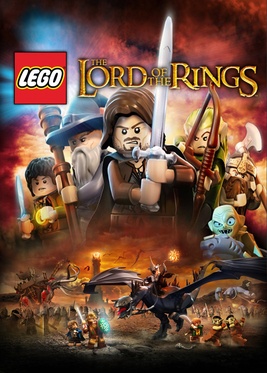
Lego The Lord of the Rings is a Lego-themed action-adventure video game developed by Traveller's Tales, that was released on Nintendo 3DS, Nintendo DS, PlayStation Vita, Microsoft Windows, Wii, PlayStation 3, and Xbox 360. The OS X version of the game, published by Feral Interactive, was released on 21 February 2013.
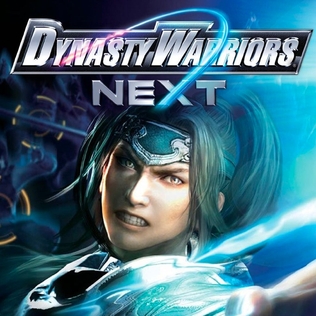
Dynasty Warriors Next is a hack and slash video game and a spin-off title of the Dynasty Warriors series of video games. Developed by Omega Force and published by Koei, it was released for the PlayStation Vita. Similar to the other games in the franchise, the game's plot follows that of the book Romance of the Three Kingdoms by Luo Guanzhong. The game was developed as a Vita launch title, and was released along with the console in all regions.
Rymdkapsel is a 2013 minimalist real-time strategy video game by indie developer Grapefrukt, the studio of Martin Jonasson. Players build a space station using tetromino pieces while managing resources and minions, defending against attacks, and extending the base towards four monoliths at the edges of the level. The game was built over a year and a half and was inspired by the base-building aspects of the Command & Conquer series. It was Jonasson's first full game as an indie developer. Rymdkapsel was released on May 7, 2013 for PlayStation Mobile, and was later ported to iOS, Android, Microsoft Windows, OS X, and Linux. Reviewers gave the game generally favorable reviews, where they appreciated its simplicity and challenge, but not its brevity and slow start.

William Timothy Rogers Jr. is an American video game journalist, developer, and video essayist. His work is associated with mid-2000s New Games Journalism, a style of video game journalism that emphasizes the author's subjective and personal experiences in relation to the game world. The Guardian cited his 2005 opinion piece "Dreaming in an Empty Room: A Defense of Metal Gear Solid 2" as a core example of the genre. Rogers is additionally known for his verbose writing style and his video game reviews website ActionButton.net. He has also written for Next Generation, GamesTM, Play, Game Developer, and Kotaku. He later edited videos for Kotaku before resigning from the site and becoming an independent YouTuber.
Unreal Tournament was a first-person arena shooter video game developed by Epic Games. It is the ninth game in the Unreal franchise, the fifth game in the Unreal Tournament series, and the first entry to be released since 2007's Unreal Tournament 3. The game utilizes Epic's Unreal Engine 4 and was released for free on Microsoft Windows, OS X, and Linux. The game was released as an alpha in 2014, but was never completed due to Epic Games' focus on Fortnite Battle Royale.

Ziggurat, stylized as ZiGGURAT, is a retro-style arcade shooter video game developed by Action Button Entertainment for iOS platforms. As the world's last human fighting off incoming alien freaks from atop a ziggurat, the player uses touch controls to charge and shoot the enemies away, and dies if hit by an enemy. The game has 16-bit graphics style and an 8-bit chiptune soundtrack. Action Button designer Tim Rogers developed the game idea based on his experience with Angry Birds, which later led to his forming Action Button as a company with Ziggurat as its first release on February 17, 2012.

Videoball is a minimalist sports video game by Action Button Entertainment. Up to six human and computer-controlled players form two teams. Each uses an analog stick and a single button to control triangles that shoot charged projectiles at a ball and other players. The objective is to knock the ball into the opposing team's goal. Apart from exhibition matches, the game has a scenario challenge-based Arcade mode, and supports online team and ranked multiplayer matchmaking. Videoball has a simple visual style with bright colors, basic shapes, and many customization options.
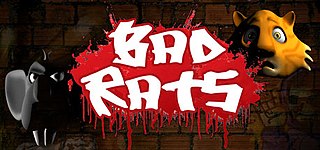
Bad Rats: The Rats' Revenge is a 2009 puzzle video game developed by Invent4 Entertainment. Over a string of levels, the player places a set of rats and static objects to guide a ball towards a trap that kills a cat. Bad Rats was released as Invent4 Entertainment's debut game on 20 July 2009 via Steam, followed by releases on other services in 2010. While it received no reviews at release, retrospective pieces criticised the game's graphics, puzzles, and physics. Bad Rats is considered an oddity for being released on Steam while the platform's catalogue was still hand-curated. It became a popular gag gift on Steam, leading to more than 400,000 owners by 2018. A sequel, Bad Rats Show, was released on the seventh anniversary of Bad Rats in 2016.

















